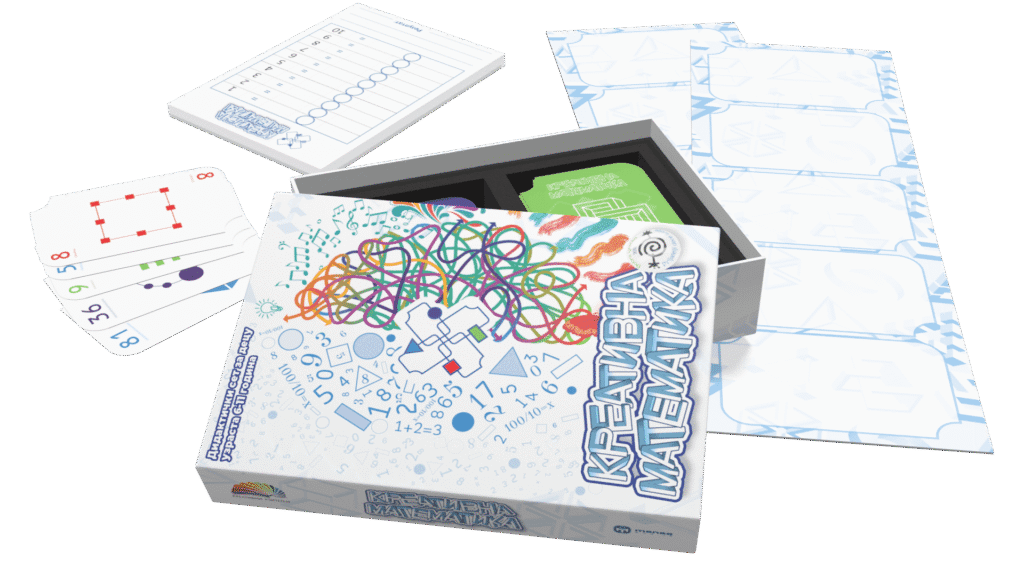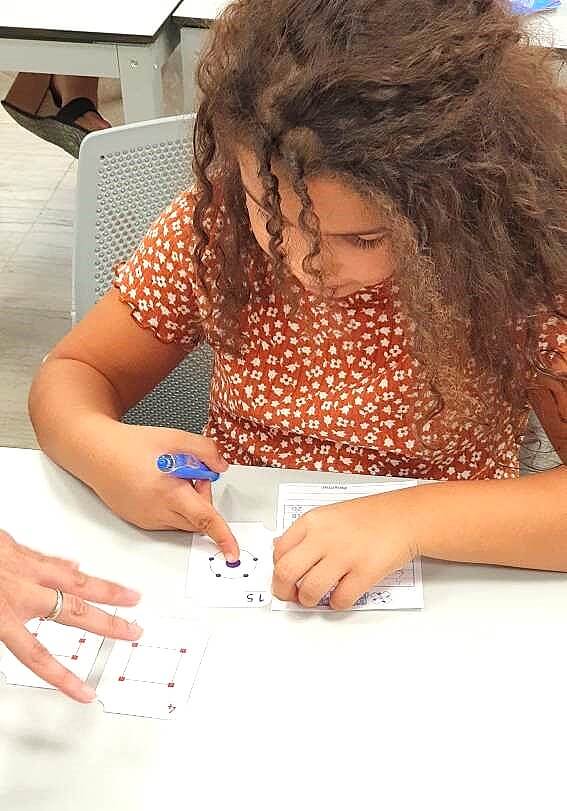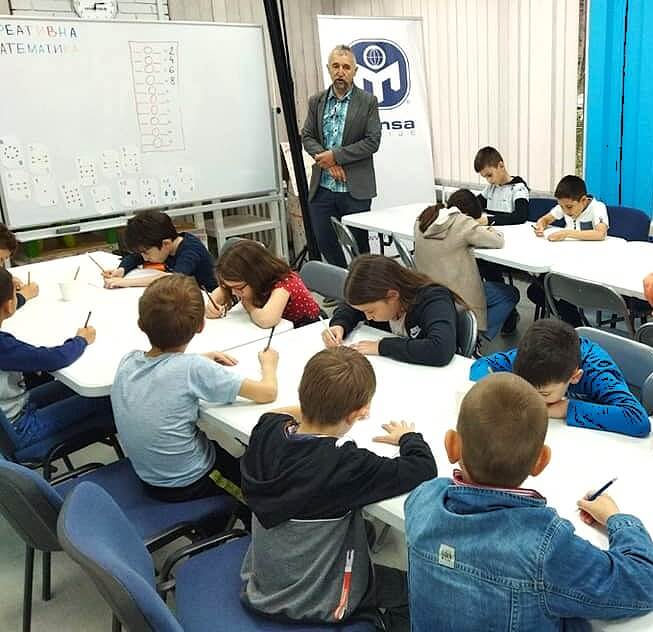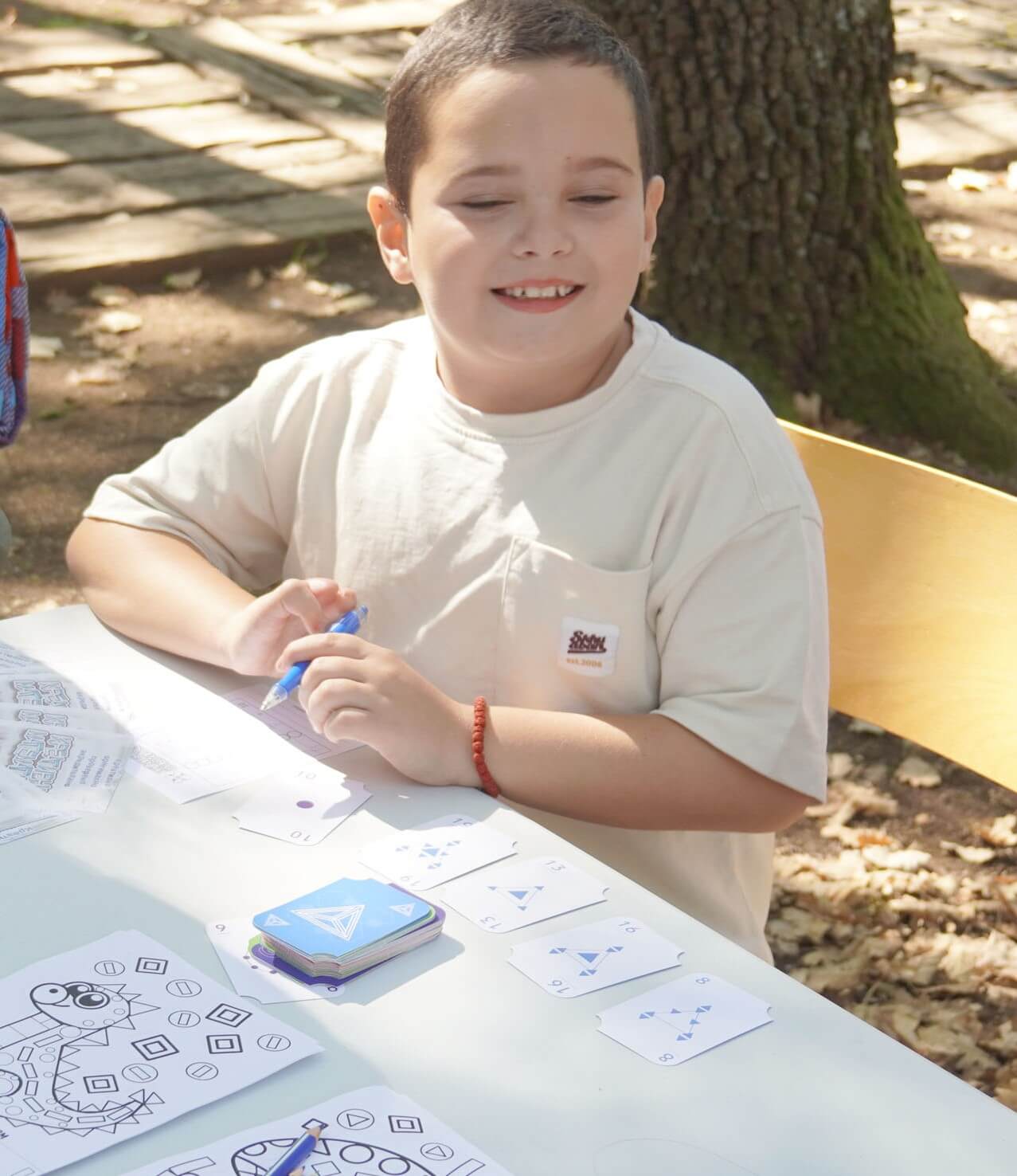The learning kit is an educational set of games designed for learning arithmetic – from preschool age up to the fourth grade of primary school. It enables easier learning of mathematics in the lower grades, with one of its greatest contributions being the mastery of multiplication and division tables through play, movement, and visual cues that help children quickly and independently reach correct answers.

It was created based on the cards from the Kreativna matematika game and developed through practical application, classroom testing, and collaboration with teachers. The set contains 12 different games, with the final one being an educational card game that allows children to practice arithmetic operations through play while also developing logical thinking, strategy, focus, and many other skills.
This set represents a methodology for learning arithmetic. Children gradually adopt the concept of numbers by connecting their visual form with counting the symbols on the cards. The progression continues with games such as The Greater Takes the Smaller, followed by mastering units and tens, arithmetic operations, sequences, and equations.

What Are the Values of the Learning Kit?
The greatest value of the Learning Kit is that it helps children learn multiplication and division tables more easily. Before a child begins to master the multiplication table, they learn number sequences through play — an important step toward understanding numbers, relationships, and mathematical patterns. In this way, learning becomes logical, fun, and natural instead of relying on memorization and frustration. Through play, children connect concepts more quickly and remember them long-term. And even if they forget a result, sequences serve as a reliable reference. With the help of sequences and fingers, it’s easy to recall the correct answer.

Official confirmation: The Institute for the Advancement of Education 🔗 has accredited the Learning Kit as a teaching aid, allowing it to be used in mathematics classes. The accreditation came as a result of extensive classroom testing of the Learning Kit, as well as a detailed review by renowned experts at the Institute itself. (link).
The Value of the Learning Kit for Teachers: By using the kit, teachers gain a clear teaching methodology and ready-to-use templates that can be applied to create exercises — both in class and as homework. Since mathematics is one of the most challenging subjects for many children,
The Value of the Learning Kit for Students: The exercises are experienced as a game with multiple levels. Each subsequent template is more challenging, making learning engaging and motivating. By working with the Kreativna matematika Learning Kit, students break the myth that mathematics is something to be feared and

The use of the Learning Kit is a win-win situation — teachers save time and energy, while students become more engaged, attentive, and motivated to learn. The teacher has an effective tool, and children learn with a smile.
Do you want to combine fun, logic, and strategy?
👉 Discover Kreativna matematika – an educational game that develops logic, focus, and a love for mathematics!
